BPH of the Prostate: What are the Treatments
Benign prostatic hyperplasia or BPH of the prostate is a non-cancerous enlargement of the prostate gland, BPH is quite a common benign tumor that is found in men, especially older men as the prostate enlarges.
BPH of the prostate although non-cancerous occurs more often in Western countries as opposed to Eastern countries such as China and Japan, BPH is thought to be more common amongst colored males.
Studies on BPH
Not so long ago, a clinical study discovered a genetic link for benign prostatic hyperplasia in men under 65 that had a very enlarged prostate, it was found that their Male family relatives were 4 times more likely than other males to need surgery for BPH at some stage during their lives, their sibling brothers were more than 6 times more likely to develop BPH.
BPH symptoms
BPH of the prostate produces symptoms by getting in the way of urine flow through the urethra, the symptoms of BPH are found in men about one in four by the age of 55, and in more than 50% of men over 75.
Are treatments necessary
In a lot of cases treatment is not necessary until the symptoms start to bother the person, usually by the age of 80 around 20% -30% of men complain of symptoms that are bothersome enough to require treatment.
Until recently the only option was surgery, however the range if treatment options has increased significantly with the approval of slightly invasive procedures where the surgeon opens the prostatic urethra, there are drugs available that can alleviate the symptoms by reducing the prostate size.
Other treatments include drugs that relax the prostate muscle tissue that helps to support the urethra, there are natural alternative medicines available that support the reduction of the enlarged prostate and help with inflammation.
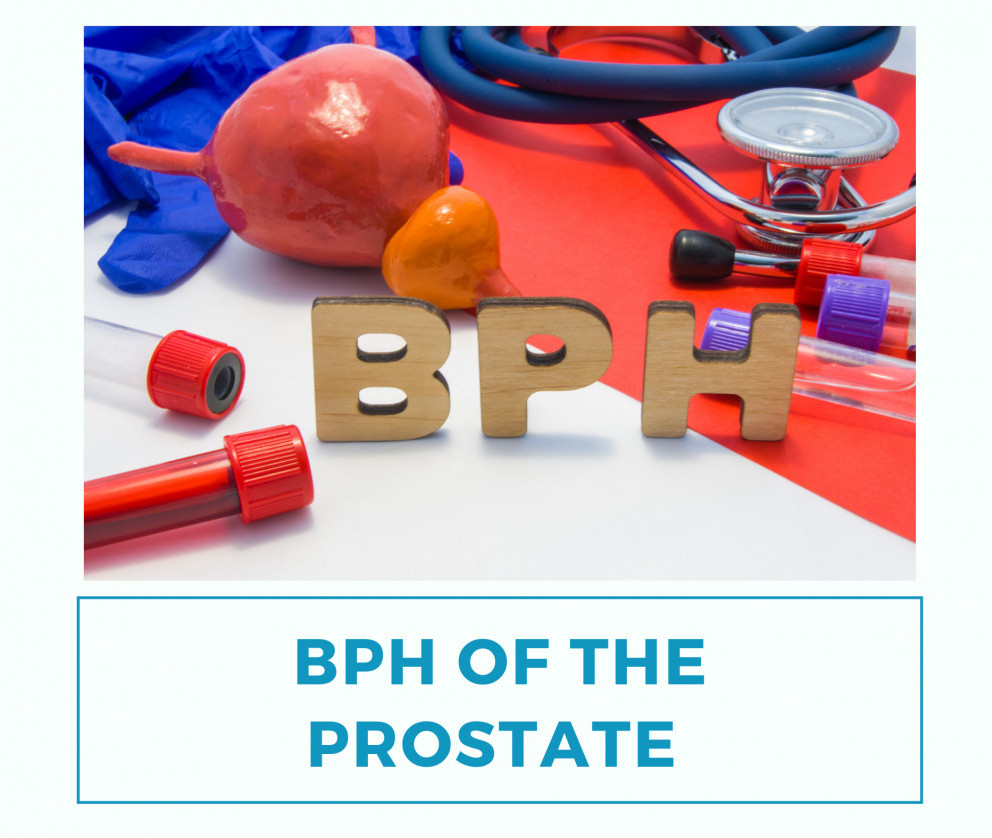
Signs and symptoms of BPH of the prostate
The signs and symptoms of BPH of the prostate are divided into two sections, those signs and symptoms caused by obstruction of the urethra and those caused by secondary changes to the bladder.
What are typical symptoms
In the case of typical obstructive symptoms these are common:
- Difficulty when beginning to urinate
- Weakened urine stream
- Interruptions during urination
- frequent dribbling following urination
In the case of changes to the bladder these are common:
- Urgent need to urinate
- Constant or frequent urination
- A sense that your bladder isn’t empty
- Frequent night time visits to the bathroom
Problems occur as the bladder becomes overly sensitive to excess urine, it sometimes leads to incontinence where the man can’t control his bladder causing him to bed wet, it can also cause an inability to get to the toilet in time.
BPH of the prostate can cause pain during urination especially if a bladder infection, stone or tumor are present, a further complication could be hematuria or blood in the urine that could point to BPH of the prostate, however this only happens one minority of cases.
BPH of the prostate Diagnosis
A doctor will conduct a medical history to give some clues regarding other conditions that could be BPH of the prostate, for example bladder cancer, urethral stricture, stones, pelvic floor muscle spasms, abnormal pelvic floor or bladder function.
A stricture could be the result of damage to the urethra caused by a previous trauma, catheter insertion or perhaps an infection like gonorrhea, if there is blood in the urine bladder cancer may be considered.
Patients that complain of pain in the penis or bladder could indicate infection, bladder stones, irritation or some compression on the pudendal nerve, patients with conditions like multiple sclerosis or Parkinson’s may have a neurogenic bladder issue, patients with reported deterioration of sexual function are also in this category.
The doctor will ask a lot of medical history questions concerning worsening urinary symptoms if the patient is taking sinus or cold drugs, had a previous UTI or prostatitis, that can cause lower back pain around the scrotum or rectum area.
The doctor may also ask about prescription medications that are being taken in case some of them could be worsening the symptoms associated with BPH of the prostate.

Physical examination
Following the medical questions a physical examination will take place, the doctor will observe as the patient urinates to rule out any urinary irregularity, the lower abdomen will be examined to check for swelling, this could point to an enlarged bladder because of excess urine.
A digital rectal exam or dre will be completed allowing the doctor to assess the size of the prostate, its consistency and shape, a gloved finger is placed in the rectum, although mildly uncomfortable this physical exam is essential for a proper diagnosis.
If firm or hard area in the prostate are found it could raise the question of prostate cancer, depending on the medical history or neurological disease the physical exam may also take in an examination for neurological abnormalities that could indicate a neurogenic bladder could be causing urinary symptoms.
Urine analysis
Doctors will order a urinalysis in all cases of symptoms in BPH of the prostate, if symptoms are mild the urinalysis may be the only lab test as long as no other abnormalities are suspect based on the physical examination and medical history.
If urinary infection is suspected a urinary culture could be ordered from the lab, in more chronic or severe cases of BPH of the prostate blood urea nitrogen, haemoglobin or blood creatinine tests can be added to eliminate any anaemia or kidney damage.
The recommended PSA or prostate specific antigen test measures levels in the blood that screen for prostate cancer, this test can be carried out in conjunction with a DRE test, the reason is that a PSA test by itself cannot determine if symptoms are caused by BPH of the prostate or prostate cancer, both conditions can raise psa levels.
Does BPH of the prostate have to be treated
Its difficult to predict whether or not BPH of the prostate has to be treated because the symptoms can stay stable for a number of years, some could even improve over a period of time, according to some studies in as many as 33% of men with benign prostatic hyperplasia.
In a BPH study conducted by the Mayo Clinic symptoms associated with the condition did not get any worse over a 3-5 year period of the study, in the men that did need treatment it was found that a progressive reduction in the force and size of the urinary stream and a feeling of the bladder mot emptying fully were the symptoms that correlated with treatment being needed.
Waking up during the night to pee is one of the symptoms of BPH of the prostate, however it doesn’t mean that treatment will be needed in the future.
Worsening urethral obstruction
Treatment will more than likely be needed if worsening urethral obstruction occurs, this process could mean a thickened uncomfortable bladder because of reduced capacity to urinate, other complications include infected residual bladder stones or urine, this extra pressure could damage the kidneys.
Treatment decisions
The doctor will be faced with treatment decisions based on how severe the symptoms are, the extent if damage to the urinary tract and the overall health of the patient, in general terms treatment decisions are based on severity of symptoms, those with a few or mild symptoms of BPH of the prostate will not be treated.
However, surgical intervention is required when the following are present:
- Complete inability to pee following acute urinary retention
- Bladder doesn’t empty enough because of kidney damage
- Bladder stones
- Persistent recurring blood in the urine (hematuria)
- Incontinence because of an overfilled or sensitive bladder
- Severe enough symptoms that affect the patients quality of life
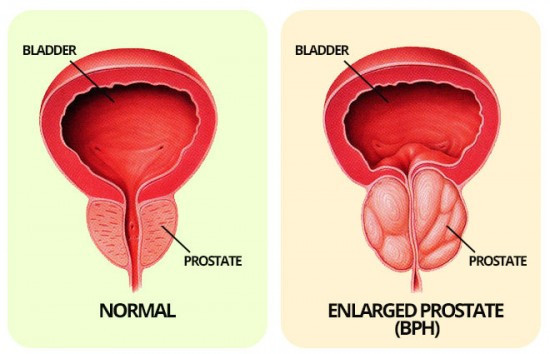
Moderate symptoms of BPH of the prostate
In men with moderate symptoms of BPH it’s more difficult for the doctor to make treatment decisions because he has to weigh up the possible outcome of treatment against the severity of symptoms, the bottom line for most doctors is are the symptoms severe enough to diminish the patients quality if life to warrant treatment.
The doctor must select the most appropriate treatment for BPH of the prostate based on the different forms of therapy in relation to their costs, effectiveness and side effects.
What are the treatments for BPH of the prostate
The treatment options for BPH of the prostate are limited to
- Watchful waiting
- Prescription medications
- Surgery
Watchful waiting
When a patient presents with the symptoms of BPH of the prostate a period of what’s called watchful waiting is recommended, that means because it is known that BPH is unpredictable and initial symptoms may not be so bothersome a period of watchful waiting is observed.
During this time, normally about 12 months a visit will be needed to the doctor to review the progress of the symptoms, perform a physical examination and to order some blood or urine tests.
During this period it is recommended that the patient resists from taking over the counter sinus or cold medications that contain decongestants because these type of drugs can make the symptoms of BPH worse.
Prescription medications
Prescription medications are still being evaluated as to the health benefits and the possible side effects of long term therapy for BPH of the prostate, currently two types of drugs are being used to treat BPH, one is alpha-adrenergic blockers and the other is 5-alpha-reductase inhibitors.
So far, the research would suggest that these prescription medications may improve symptoms of BPH in 30-60% of men with the condition, however at this point it isn’t possible to predict which drug will be the most effective for which patient.
Some patients may not be able for surgery, if prescribed medications don’t work urethral obstruction and incontinence could be managed by in-dwelling Foley catheter or intermittent catheterization.
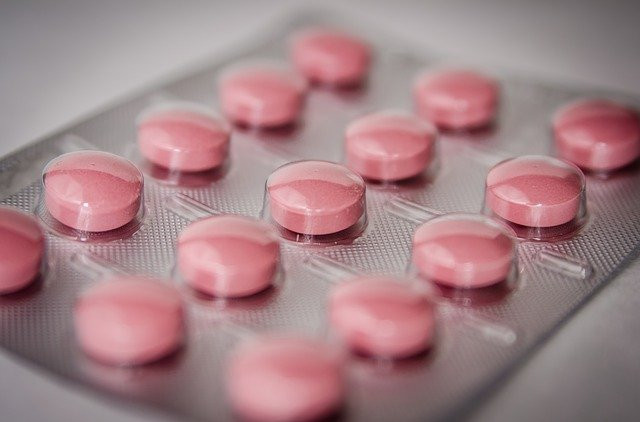
Alpha-Adrenergic Blockers
This type of drug was originally prescribed for the treatment of hypertension by reducing the tension in the smooth muscles in the walls of blood vessels and relaxing muscle tissue around the prostate, the daily use of this type of drug meant an increase in urinary flow and relief from urinary frequency and the need to wake up and pee on a regular basis.
There are a number of alpha-adrenergic drugs used for this purpose that include Tamsulosin, Flomax, Terazosin ( Hytrin) and Doxazosin (Cardura)
Studies on Terazosin (Hytrin) found that in patients with BPH of the prostate given 10 mgs daily produced an approximate 30% reduction in symptoms in about 33% of men in the study, it was found that lower than 10 mg doses of the drug didn’t produce the same benefits.
The authors of the study recommended that doctors progressively increase the daily dose to 10 milligrams except where there are negative side effects.
Side effects of alpha-adrenergic blockers
The study of patients with symptoms of BPH of the prostate concluded the side effects of alpha-adrenergic blockers noticed were:
- Fatigue
- Headaches
- Dizziness due to lower blood pressure (orthostatic hypotension)
During the study the authors concluded that orthostatic hypotension (dizziness when standing due to a drop in blood pressure) was the most common side effect, to mitigate this problem this they recommended that the dose be given in the evening.
BPH of the prostate has been found to have one troublesome side effect and that is the progression of ejaculatory dysfunction this occurs in roughly 16% of patients, a study of more than 2,000 patients given the maximum 10 mg of Terazosin, results showed that Aua symptoms index score showed a reduction in the patients score from 20-12.4 while the placebo groups reduction was less from 20-16.3.
Drugs for BPH of the prostate comparison
Finasteride in doses of 5mg is a drug used to treat and control the symptoms of BPH of the prostate, it can be effective in reducing the size of the enlarged prostate, improve urine flow and improve symptoms, it is recommended that Finasteride be used where the prostate volume size us above ca. 40ml.
Terazosin is classified as an alpha blocker an additional benefit of alpha blockers is that they work pretty quickly compared to Finasteride as well as treating high blood pressure in patients with BPH of the prostate, however the size of the prostate will determine which drug is used.
A published study in the New England Journal of Medicine recognized that Terazosin may be more beneficial in reducing symptoms and improving urinary flow compared to Finasteride, however the report pointed out that this could be down to a larger amount of men in the study had smaller prostates.
A further 3 studies on Doxazosin involving 337 patients with BPH of the prostate found that this active drug the urinary symptoms of BPH by more than 40% compared to no reduction on the placebo, the drug also increased urinary peak flow on average by 2.2 milligrams per second compared to the placebo results of 0.9 milligrams per second.
Up to that point Doxazosin was thought of as an effective drug for mild to moderate BPH of the prostate, however the clinical trials suggested that the drug could also be effective for those severe symptoms.
Are there side effects
Yes, Doxazosin has a number of side effects such as, fatigue, dizziness, low blood pressure, insomnia and headaches, the side effects led to around 10% of the participants that were taking the drug withdrawing from the trial as well as 4% of those participants on the placebo.
For those men being treated for high blood pressure, doses of this anti-hypertensive may need to be changed because of the hypotension effects of this alpha-adrenergic blocker.
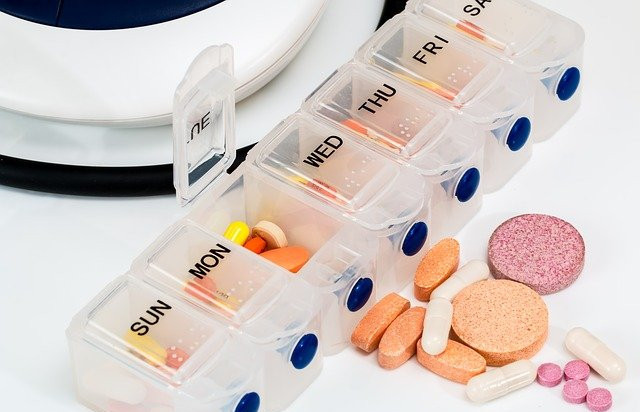
5-Alpha-Reductase Inhibitors
The second drug most commonly used to treat the symptoms of BPH of the prostate is Finasteride or Proscar, Finasteride works by blocking tester one converting to dihydrotestosterone a pivotal sex hormone stored in the cells of the prostate, Finasteride works in some men by relieving the symptoms of benign prostatic hyperplasia, shrink the prostate gland and increase urinary flow.
The only issue with using this particular 5-Alpha-Reductase Inhibitor is the length of time it needs to have the maximum effect, in some cases this can take as long as 6 months. A study of Finasteride on how safe and effective it was showed that:
- About one third of patients reported improved urinary flow
- 20% decrease in the size of the prostate albeit only 50% achieved this in the first twelve months
- Two thirds reported some relief of symptoms
A more recent study of Finasteride published last year revealed that the drug may be better suited for men with relatively larger prostate glands, the results of six studies on the drug were analyzed in more detail, it was found that Finasteride only reduced BPH of the prostate symptoms on those with larger prostates (over 40 cm).
The 5-Alpha-Reductase Inhibitor Finasteride wasn’t in any way effective for patients with smaller prostates, it was established that the drug will be less likely to get a response in patients with smaller prostates (under 40 cm) especially in those where the symptoms are a result of some cause other than a physical obstruction (example smooth muscle constriction)
A recent study on Finasteride taken over a four-year period suggested that the treatment reduced by 50% the risk of developing urinary retention or having surgery.
Are there side effects to this drug for BPH of the prostate
Like many drugs of this nature it does come with side effects, 3-4% of men suffer impotence while taking Finasteride, while almost 15% experience a significant reduction in their sexual performance no matter what size their prostate is or their age, Finasteride has also been shown to reduce the semen count during ejaculation.
Another side effect is breast enlargement (gynecomastia) an English study found that in 0.4% of patients taking Finasteride had developed gynecomastia, about 80% of those patients that stopped taking the drug experienced partial reduction or full reduction of breast enlargement.
It still isn’t clear whether or not Finasteride causes breast enlargement or that is a risk for breast cancer, patients on the drug for BPH of the prostate are being watched carefully while these issues are being resolved.

Other side effects of drugs for BPH of the prostate
Other side effects of these types of drugs for BPH of the prostate are a risk of developing a condition called post Finasteride syndrome, this is a collection of symptoms, some of which are related to sexual performance for example:
- Problems during ejaculation
- Reduced libido
- Erectile dysfunction
- Muscle weakness
- Depression
- Suicidal thoughts
- Anxiety
The symptoms are varied and can stay around for a long time even after stopping taking these drugs, Finasteride is known to decrease PSA levels by around 50%, however it thought that lower PSA levels are still a valued way to test for prostate cancer.
Following a drop in PSA levels plus any negetative effects on sexual performance go away when the use of this drug is stopped.
To get the best out of Finasteride as an effective way to treat BPH of the prostate without affecting the detection of early prostate cancer, its recommended that men should get a psa test before beginning Finasteride therapy, further psa measurements can be compared to the original.
If a patient on the drug that didn’t have a baseline psa test done, a new psa test results should be doubled to get a true reflection of PSA levels, where there is a 50% reduction in PSA levels from patients on the drug suggests that the drug isn’t being ingested or that cancer of the prostate could be present.
Other Phosphodiesterase-5 Inhibitors
Other Phosphodiesterase-5 inhibitors, like Cialis are regularly used for erectile dysfunction, when used every day the drug can also relax the soft muscle of the prostate and overuse of the bladder muscle.
Recent studies on Calias compared its impact when used daily to a placebo, the results showed a fall in prostate symptoms by 4-5 points, also the drug was way superior to the placebo in urinary frequency reduction, urinary urgency and episodes of incontinence, however the studies suggest that cialis doesn’t have any significant impact on urine flow.

Surgery for BPH of the prostate
Surgery for benign prostatic hyperplasia is a last resort, the procedure involves displacement of the adenoma that is obstructing the prostate, the second option is to remove it, it really is a last resort for patients that have failed taking the normal drugs,
Surgery is also the last option for those men that haven’t has success with prostate drugs and have developed urinary retention, recurring urinary tract infections, bleeding from the prostate or bladder stones.
Unfortunately, a large number of patients suffer too many side effects from prescription medications and are poorly compliant with this type of therapy, in cases like this surgery is considered to prevent bladder function deteriorating in the long term, surgical options include:
- Monopolar and bipolar transurethral resection of the prostate
- Robotic simple prostatectomy (retropubic, suprapubic and laparoscopic)
- Transurethral incision of the prostate
- Bipolar transurethral vaporization of the prostate
- Photoselective vaporization of the prostate
- Prostatic urethral lift
- Thermal ablation using transurethral microwave therapy
- Water vapor thermal therapy
- Transurethral needle ablation of the prostate and enucleation using holmium or thulium laser.
Thermal Treatments for BPH
Thermal treatments involve using heat transfer using a radio frequency generator to alleviate symptoms of BPH of the prostate, tranlutheral needle ablation is delivered into the prostate by tiny needles at the top of the catheter, this process heats the tissue surrounding the prostate.
A 6 months study of men with BPH of the prostate and using thermal treatments reported reduced symptom scores by 61%, some minor side effects such as mild pain or trouble urinating, one man reported reduced ejaculation.
Translutheral microwave therapy is another form of thermal treatment, it is a minimally invasive option to surgery for men with bladder issues caused by BPH of the prostate.
Translutheral microwave therapy is carried out under an anesthetic on an outpatient basis, the therapy uses microwave energy to generate heat applied to the prostatic tissue.
New thermal therapy for bph of the prostate
In more recent times a new form of thermal therapy for benign prostatic hyperplasia has been in operation, it involves converting thermal energy into water vapor causing unhealthy cells in the prostate to die, one or two studies show that this type of thermal therapy was effective by reducing prostate size by 29%.
Studies have shown that patients that are put on thermal therapies may need several treatments for it to be effective in treating symptoms of BPH of the prostate, the majority of men in the study needed to return for more treatment within the first 5 years.

Translutheral incision of the prostate
Translutheral incision of the prostate is an older procedure where an instrument is passed through the urethra, the surgeon doesn’t aim to remove excess prostate tissue, instead the idea is to make one or two cuts to take pressure off the prostate.
Translutheral incision of the prostate is a good option for patients with smaller prostates, it does take less time than other thermal therapies, it can be done under local anesthetic on an outpatient basis, lower reductions in ejaculation is a main benefit.
https://highislandhealth.myshopify.com?sca_ref=1632011.Vb8yonIXZc
Prostatic urethral lift for BPH
Prostatic urethral lift for BPH is an alternative to therapies that resect or evaluate prostate tissue, the procedure is designed to unobstruct the prostatic urethra and tighten the prostatic lobes by visually inserting urolift implants directly into the prostate.
The urolift implants are positioned using a needle with a tiny metallic tab attached that is attached to a prostate capsule, as soon as the capsule tab is in position a suture is joined to the capsule tab, it is tensioned and another stainless steel tab is positioned on the suture to keep it in place, the suture is then severed.
Transurethral Prostatectomy
In terms of the best therapeutic treatment for BPH of the prostate Transurethral Prostatectomy stands out when it is compared to other therapies, the procedure involves using an instrument called a resectoscope that passes through the urethra and into the bladder.
The instrument has a wire attached that is used to remove prostate tissue, it then uses electric current to seal blood vessels, a catheter stays in place for 1-3 days, a hospital of 1-2 days is usually required, there is little or no pain, the patient should be fully recovered within 3 weeks following surgery.
Transurethral Prostatectomy can be used in certain patients with smaller prostates and medical problems on an outpatient basis, there is better improvement in those with the worst symptoms, significant improvements happen in about 93% of patients with more severe symptoms.
About 80% of patients with moderate symptoms report significant improvements, mortality rates are quite low about 0.1%, impotence issues in Transurethral Prostatectomy occur in 5-10% and incontinence is deemed to be between 2-4%.
Prostatectomy for benign prostatic hyperplasia
Prostatectomy for benign prostatic hyperplasia (bph) is a very common procedure, around 200,000 are done in the USA every year for BPH of the prostate, the operation involves removing the inner part of the prostate by a simple Prostatectomy.
A simple Prostatectomy is different from a radical prostatectomy for cancer of the prostate, during a radical prostatectomy all of the prostate is taken out while a simple Prostatectomy only removes the inner part of the prostate.
A simple Prostatectomy is the simplest and fastest way to improve symptoms associated with BPH of the prostate, however the procedure may not totally get rid of discomfort because the surgery will unblock the obstruction but the symptoms may still be there because of abnormalities in the bladder.
This type of surgery is not without side effects and long term complications like:
- Incontinence
- Retrograde ejaculation where semen is directed through the bladder instead of the penis
- Impotence
- In some cases (about 10% in the first 5 years following surgery) surgery may be needed a second time because of further growth in the prostate
Retrograde ejaculation doesn’t cause any harm, however it could lead to anxiety over infertility, these symptoms and their frequency will depend on what type of surgery has been carried out.
If a urinary tract infection is present surgery will be put off until the infection is treated and kidney function is normalized, patients taking aspirin need to stop taking 7-10 days prior to surgery because it can have an effect on blood clotting.
Blood transfusions are needed in around 6% of patients following the procedure, the timing of prostate surgery is elective meaning that those with a very large prostate are more than likely to experience a significant amount of blood loss, .
Open Prostatectomy for BPH of the prostate
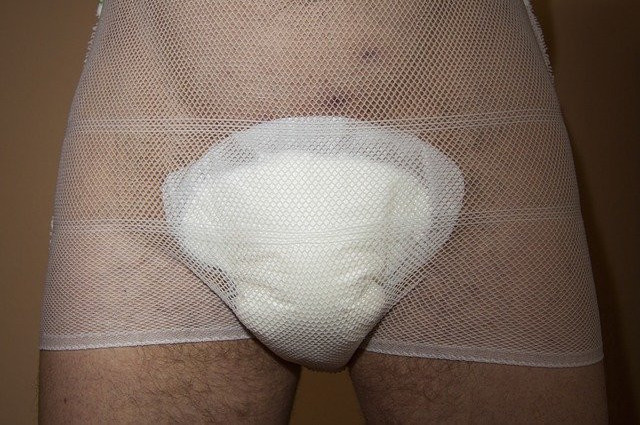
An open prostatectomy for BPH of the prostate is recommended if the prostate is very large ( more than 80 gms) translutheral surgery isn’t possible where the prostate is this size, open Prostatectomy Carrie’s a bigger risk for patients with cardiovascular disease.
Open Prostatectomy as a procedure in the past was carried out either through a lower abdominal incision or through the perineum an area between the rectum and the scrotum, however this type of treatment has been used a lot less because of the higher risk of an injury to the surrounding organs, open Prostatectomy is still in use for prostatic c
In the past, open prostatectomies for BPH were carried out either through the perineum — the area between the scrotum and the rectum (the procedure is called perineal prostatectomy) — or through a lower abdominal incision. Perineal prostatectomy has largely been abandoned as a treatment for BPH due to the higher risk of injury to surrounding organs, but it is still used for prostate cancer.
Two types of open Prostatectomy
There are two types of open Prostatectomy for BPH of the prostate suprapubic or retropubic, a suprapubic prostatectomy involves opening the bladder and taking the enlarged prostatic nodules out through the bladder, a retropubic prostatectomy involves pushing the bladder upwards until the prostate tissue is removed without having to go into the bladder.
During both open Prostatectomies a catheter is placed into the bladder through the urethra, a second catheter is positioned through an opening that is made in the lower abdominal wall.
These stay in place for 3-7 days following the procedure, the more common post op complications are wound infection (superficial) and excessive bleeding, other possible complications are pulmonary embolism (blood clot in the lungs)
. The most common immediate postoperative complications are excessive bleeding and wound infection (usually superficial). Potential complications that are more serious include heart attack, pneumonia and pulmonary embolus (blood clot in the lungs) pneumonia or the more serious heart attack.
Possible actions to help prevent these complications occurring include leg movements and ambulation while in bed and breathing exercises, hospital stay and recovery time can be longer for transurethral prostate surgery.
Can supplements for BPH of the prostate help.
Supplements for BPH of the prostate are a possible natural effective alternative to prescription medicines or surgery, it is recommended to try quality only the best quality prostate supplements, go to this page to learn more.
References
https://www.ncbi.nlm.nih.gov/pmc/articles/PMC1477638/
https://www.urotoday.com/mens-health/bph-benign-prostatic-enlargement.html
https://clinicaltrials.gov/ct2/show/NCT00029822
https://www.medicines.org.uk/emc/product/547/smpc#gref


Pingback: Supplements for the enlarged prostate